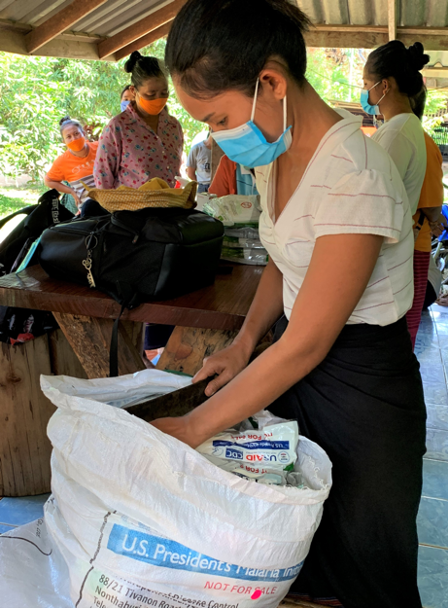Since COVID-19 was declared a pandemic, the threat it poses to the fight against malaria has gotten a great deal of attention in the news. And rightfully so.
Malaria is one of the world’s oldest and deadliest diseases. According to the most recent World Malaria Report, there were an estimated 228 million cases and 405,000 malaria-related deaths worldwide in 2018. In addition, malaria impedes economic development, threatens stability in affected countries, and endangers global health security.
Modeling earlier this year projected that if COVID-19 were to significantly disrupt prevention campaigns and access to antimalarial medicines, malaria deaths could double in 2020 and wipe out decades of hard-fought progress. A major spike in malaria cases could also overwhelm fragile health systems and compromise their ability to effectively respond to COVID-19.
A health volunteer prepares PMI-donated bed nets for villagers in Thailand. Photo by Niparueradee Pinyajeerapat, USAID.
But as I shared in this blog post, projections aren’t destiny.
I look forward to following these efforts as they progress in the coming months, and to working with PMI partner countries to assess their effectiveness over time. In the meantime, I’m optimistic that together we can re-shape the story of malaria during COVID-19—so future headlines will say the global malaria community took decisive action to blunt the impact of the pandemic, and that we’re still on target to make this the generation that ends malaria.
Sincerely,

Ken Staley, MD
U.S. Global Malaria Coordinator

